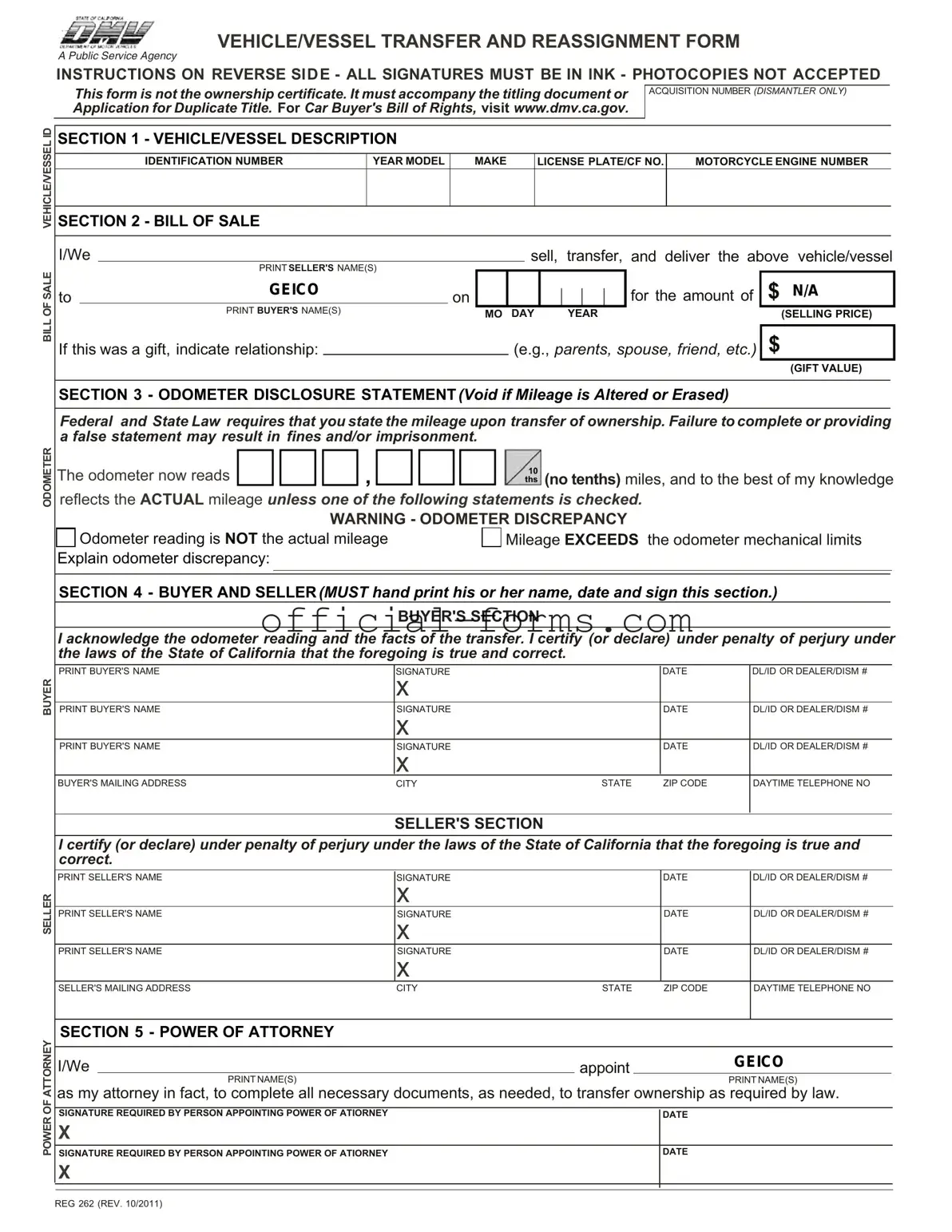When filling out the California Form REG 262, individuals often make several common mistakes that can lead to delays or complications in the vehicle transfer process. One frequent error is failing to complete all required sections of the form. Each section must be filled out accurately to ensure the transfer is processed smoothly. Missing information can result in the form being rejected by the Department of Motor Vehicles (DMV).
Another mistake occurs when individuals do not provide accurate odometer readings. The odometer disclosure statement must reflect the actual mileage at the time of transfer. Any alterations or erasures made to the reported mileage will void this section of the document. It is crucial to ensure that the mileage is reported truthfully to avoid potential legal issues.
Signatures are another area where errors are common. All signatures must be in ink, and photocopies are not accepted. Some individuals mistakenly submit a form with electronic signatures or without the required signatures altogether. This oversight can lead to significant delays in processing the title transfer.
Additionally, individuals sometimes neglect to indicate the relationship when the vehicle is a gift. This information is essential for the DMV to process the transaction correctly. Not specifying the relationship can result in confusion and additional requests for information.
Providing incorrect or incomplete buyer and seller information is another frequent issue. The names, addresses, and identification numbers of both parties must be clearly printed and accurate. Errors in this information can lead to complications in establishing ownership.
Furthermore, individuals may overlook the requirement for co-owners. If the vehicle is co-owned, the form must include the signatures of all parties involved. Co-owners connected by "AND" must both sign, while those linked by "OR" require at least one signature. Failing to adhere to these requirements can hinder the transfer process.
Using the form for purposes other than intended is another common mistake. The REG 262 form is specifically for transferring ownership and should not be used for other transactions. Misusing the form can lead to confusion and potential legal ramifications.
Lastly, individuals may forget to keep a copy of the completed form for their records. While the DMV retains a copy, having a personal record can be beneficial for future reference. Keeping a copy helps ensure that all parties have access to the information if any issues arise after the transfer.
